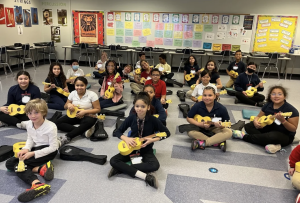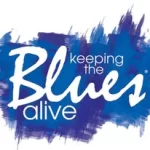Even if you just read (hopefully) my monthly articles about music education and its abounding benefits on individuals, especially children. Although music and other arts programs are suffering and grossly underfunded, organizations like Joe Bonamassa’s Keeping The Blues Alive and many others are working to make sure music remains as an option for children. If you can, please visit https://keepingthebluesalive.org/ to make a contribution to helping kids make music, every penny counts!
Whether you are interested in enrolling your child in lessons or a music program or are just curious about how learning an instrument can benefit an individual, keep on reading as I outline a few ways music can help a child in everyday life.
A Welcomed Break
Some parents and even teachers believe that any time spent out of a core classroom like math or English, is counterintuitive to learning. I would like to offer the counterpoint to this argument; if we are constantly cramming information into children’s brains without a break or a different activity, they are more likely to overload and may not retain the information they have learned. Various studies have shown that with several breaks like recess or various activities, productivity grows exponentially, the same actually goes for office jobs as well!
So, if we introduce various extracurriculars into a class schedule, like music, we are not only stimulating a different side of the brain, but also allowing for a needed break from our common core subjects.
Camaraderie
Sometimes it is challenging to make friends even at a young age. Music classes offer a space filled with like-minded children with shared interests, and if they head to future schools together, they may make lifelong friends. I know from firsthand experience that band programs, especially in high school operate like a family unit and offer the chance to meet a bunch of people with a wide range of personalities and skills. While in the normal academic classroom, we may find a few people with similar qualities, but getting to spend time after school and on trips with band mates is a unique experience and vital for some students from a social standpoint.
Creative Outlet
I remember watching an amazing TED talk with a fantastic speaker, Ken Robinson about schools killing a child’s creativity. It is a great speech that touches on the core of this article and Keeping The Blues Alive and I think everyone should watch it!
A specific part of the talk that stand out for me is when Robinson talks about the famous choreographer Gillian Lynne who is known for her work with the Broadway shows Cats and Phantom of the Opera, yeah she’s kind of important. Apparently, when Gillian was in school in England, her teachers were concerned that she might have a learning disability because she couldn’t sit still. Robinson points out that now we would say she has ADHD which, Robinson quips was something in the 30’s that “people weren’t they could have.” She was sat down with a specialist alongside her mother and they outlined what Gillian was doing wrong. Supposedly, the doctor and Gillian’s mother left the room, but he kept a radio with music on in the room. The doctor told the mother to simply watch her daughter who immediately leapt to her feet and started dancing, which prompted the doctor to say, “your daughter isn’t sick, she’s a dancer.”
This story always sticks out to me because it shows the importance of other forms of education and activity for children. After she went to a dance school, Gillian Lynne thrived because she was in her element surrounded with other people who had to “move to think.” If we stifle our children and blame various mental illnesses without trying a simple change in lifestyle we are truly doing them a disservice.







